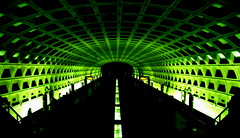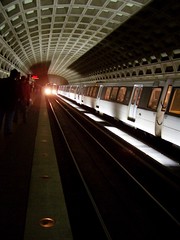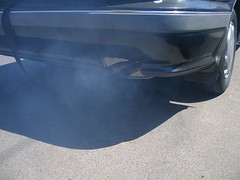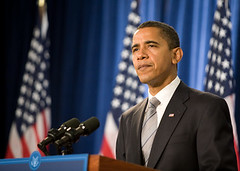Wall Street Journal’s Interview with Transportation Secretary Ray LaHood
(Source: Wall Street Journal)
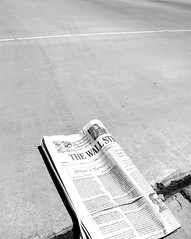 President Obama and Vice President Biden spoke with Transportation Secretary Ray LaHood Tuesday at Transportation Department headquarters, where they announced the first batch of stimulus funds getting distributed. In an interview with The Wall Street Journal, Mr. LaHood talked about spending stimulus money wisely, his opposition to an increase in the gasoline tax, new fuel emission standards and more. Below are edited excerpts from the interview.
President Obama and Vice President Biden spoke with Transportation Secretary Ray LaHood Tuesday at Transportation Department headquarters, where they announced the first batch of stimulus funds getting distributed. In an interview with The Wall Street Journal, Mr. LaHood talked about spending stimulus money wisely, his opposition to an increase in the gasoline tax, new fuel emission standards and more. Below are edited excerpts from the interview.
* * *
The Wall Street Journal: What’s being done to ensure that the $48 billion going to transportation projects in the stimulus bill is spent wisely?
Mr. LaHood: Our people are in touch daily with these DOT secretaries. We generally, having worked with them for years and years and years, know what is fundable. It really falls under two categories. Projects that were started and then stopped because they ran out of money, and something that’s been sitting on a shelf in a DOT office because they didn’t have the money to fund it. Some of these, like the one we announced today (a road repaving project in suburban Maryland), have been in process…These are projects that these folks have known about and have been talking about for some time. This isn’t something brand new that’s been sprung up on them…I don’t think you’re going to see something weird pop up…It’s pretty traditional stuff. It really is.
WSJ: Are you concerned when you hear squabbles between mayors and governors over how to spend the stimulus money?
Mr. LaHood: [Cities] are concerned that 70% of the money is going to the states and they’re only going to get 30%…These disputes, look it, they’re going to take place….In the end, I’m not going to be able to change the idea that 70% of this is going to the states and 30% are going to them. I tried to make a case for them. But the way it’s designed here…it is what it is.


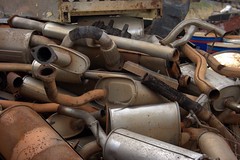 “Battery electric vehicles, plug-in hybrids and possibly hydrogen fuel cell vehicles are expected to become increasingly available in the near-to-medium term given recent improvements especially in batteries,” the 50-by-50 campaign noted in a
“Battery electric vehicles, plug-in hybrids and possibly hydrogen fuel cell vehicles are expected to become increasingly available in the near-to-medium term given recent improvements especially in batteries,” the 50-by-50 campaign noted in a
